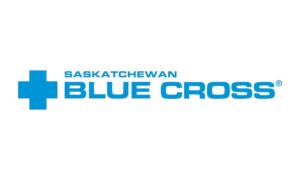How much you should insure your house?
How much you should insure your house?
Most homeowners insurance policies provide a minimum of $100,000 worth of liability insurance, but higher amounts are available and, increasingly, it is recommended that homeowners consider purchasing at least $300,000 to $500,000 worth of liability coverage.
What does full replacement mean?
Full Replacement Cost means the actual replacement cost from time to time of the improvement being insured, including the increased cost of a construction endorsement, less exclusions provided in the fire insurance policy.
How do you calculate dwelling coverage?
For a rough estimate of your dwelling coverage amount, you can simply multiply the square footage of the home by the local rebuild cost per square foot.
Do I need HO5?
If you have a lot of valuable personal property and live in an area where coverage is available, you might want to consider an HO-5 policy. They’re often not that much more expensive than a typical HO-3 policy and can help protect your property in a wide variety of situations.
What’s an HO5 policy?
An HO5 insurance policy is a type of homeowners insurance policy that provides broader protection and higher coverage limits than the typical options.
What is an HO 4?
HO4 insurance, or renters insurance, is financial coverage for 1) damages or losses to your stuff 2) legal fees if you’re sued 3) other’s medical bills if you’re at fault and 4) temp living expenses if your place becomes uninhabitable.
What does an HO 2 policy cover?
The HO2 policy is a named-perils only insurance policy which means that it covers both your dwelling and personal property from damage caused by events, or perils, specifically named in your policy and nothing else. Some of the common named-perils found in an HO2 policy include: Theft. Aug 6, 2020
What is an HO 8?
Homeowners Modified Form 8 (HO 8) — part of the Insurance Services Office, Inc. (ISO), homeowners portfolio, the HO 8 form provides basic named perils coverage for direct damage to property, personal liability coverage, and medical payments to others as respects owner-occupied dwellings.
What is an HO 5?
Sometimes called the comprehensive form, an HO5 policy is a type of home insurance written on an open-perils basis. This means your insurer covers damage to your home and personal property when it’s caused by an event, or peril, as long as it’s not listed as an exclusion in the policy.
Is HO3 better than HO6?
HO-6 insurance are very different insurance policies. The main difference is the type of properties they cover. HO-3 insurance covers standard homes, whereas HO-6 insurance covers condos. Oct 20, 2020
Is HO6 cheaper than HO3?
The HO3 policy will usually only return you the Actual Cash Value of the items you have lost and covers your personal property on a named peril basis. … HO3 vs HO6 Homeowners Policy. HO3 HO6 Actual Cash Value Replacement Cost Value Feb 27, 2022
What is an HO 10?
Policy Highlights. Included Coverage. Liability – Policyholders are covered if an injury occurs to someone while on their premises, or if they accidentally injure someone or damage property while they are away from the home.
What does an HO-3 policy cover?
HO-3 policies cover liability expenses and costs of living elsewhere. HO-3 homeowners insurance covers you for a variety of other expenses related to your home beyond your physical property. Common coverages include personal liability, loss of use and medical payments. Sep 29, 2021
Is lemonade a HO3 or HO5?
At Lemonade, we believe you should always have your stuff covered with replacement cost, so while we offer you an HO3 policy, it comes with this HO5-style feature.
What is the difference between HO1 and HO3?
HO1 and HO2 policies are examples of “named perils policies.” That means they only cover dangers that are specifically listed in the policy. HO3 policies are “open peril policies”. That means they’ll cover all dangers except those specifically excluded in the policy documents.



